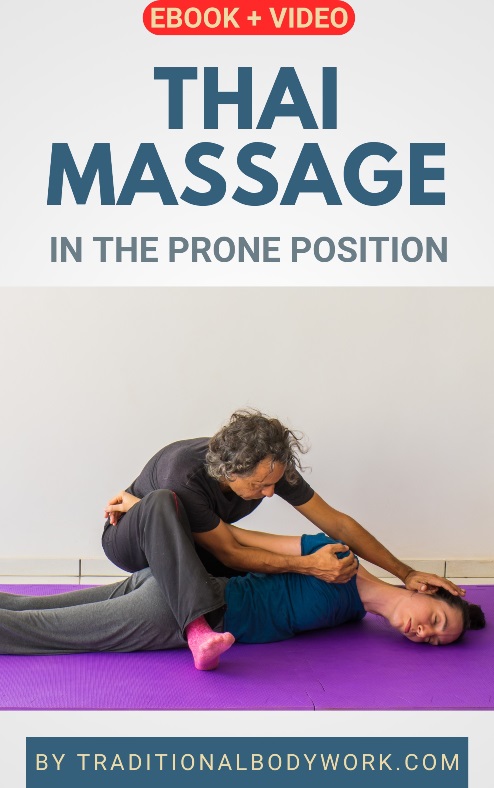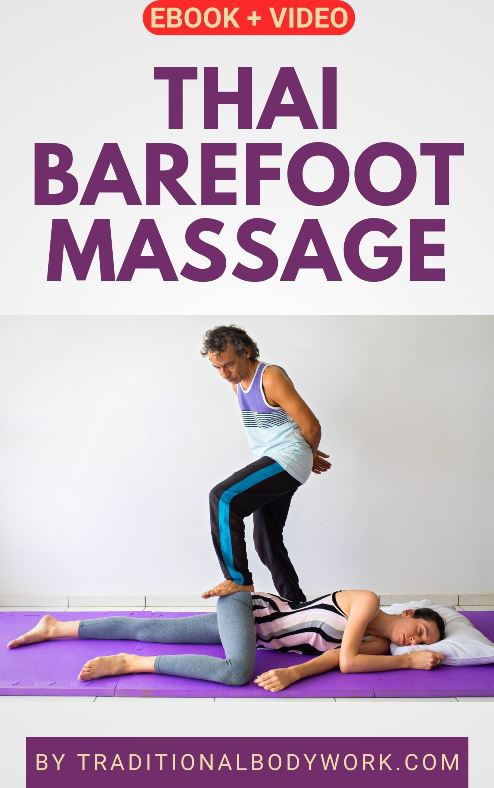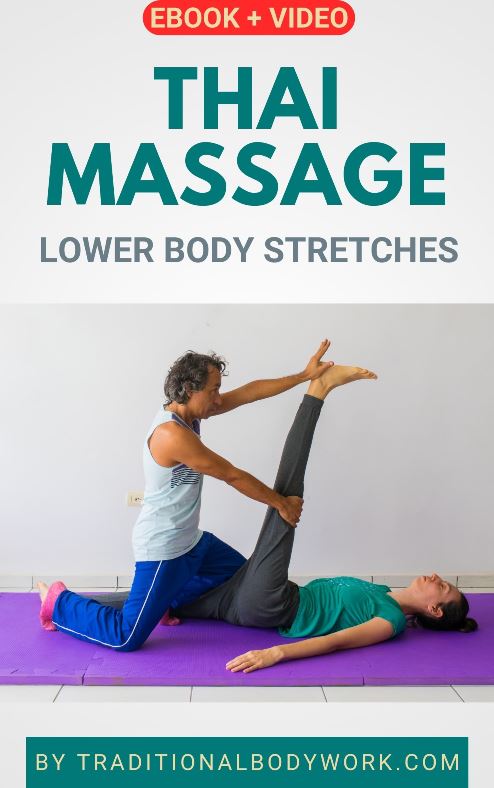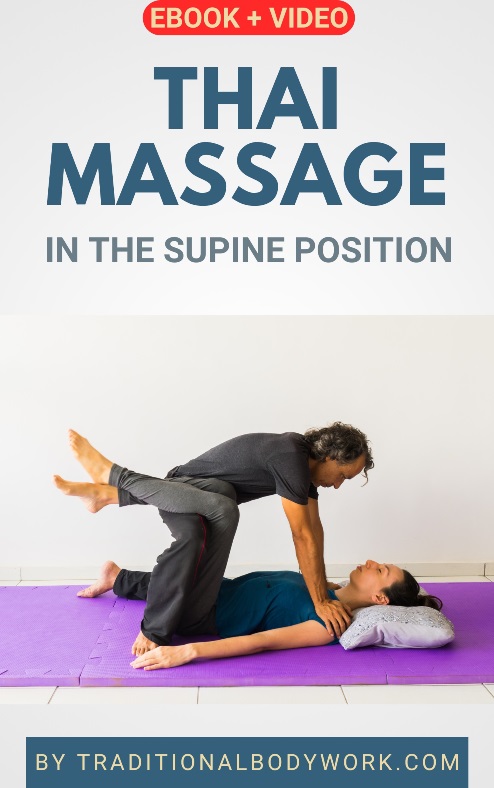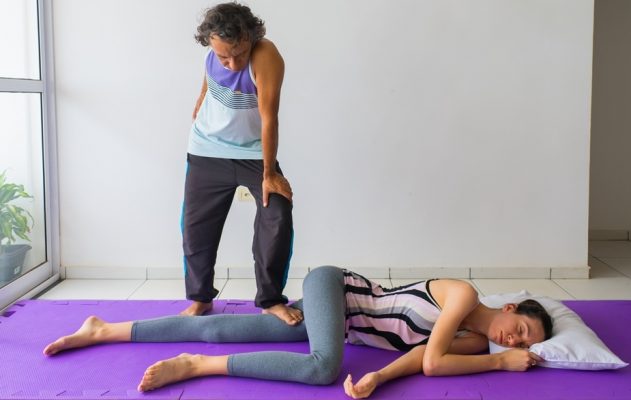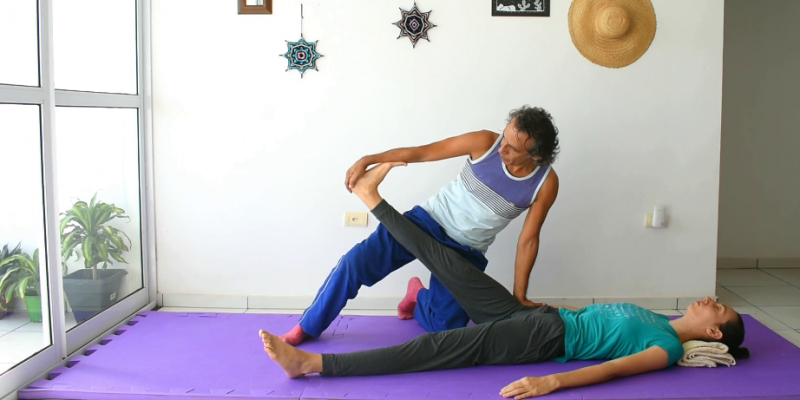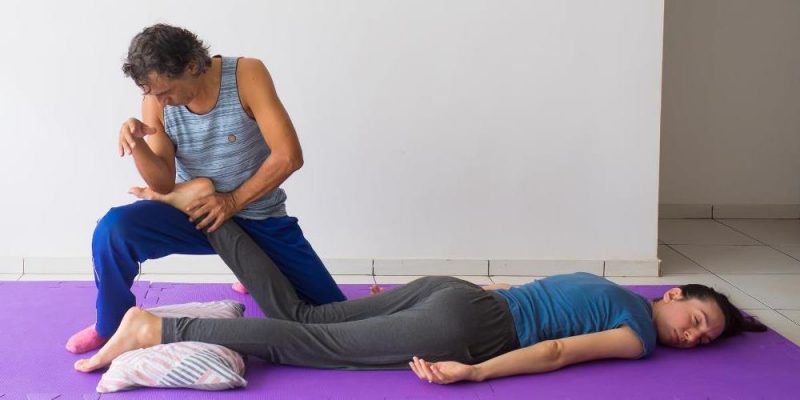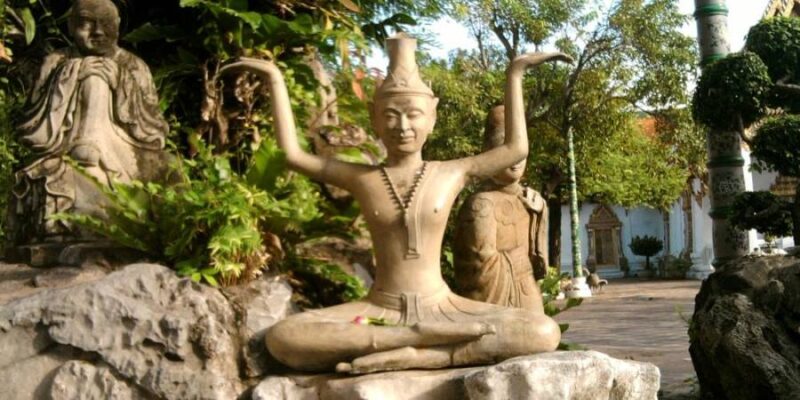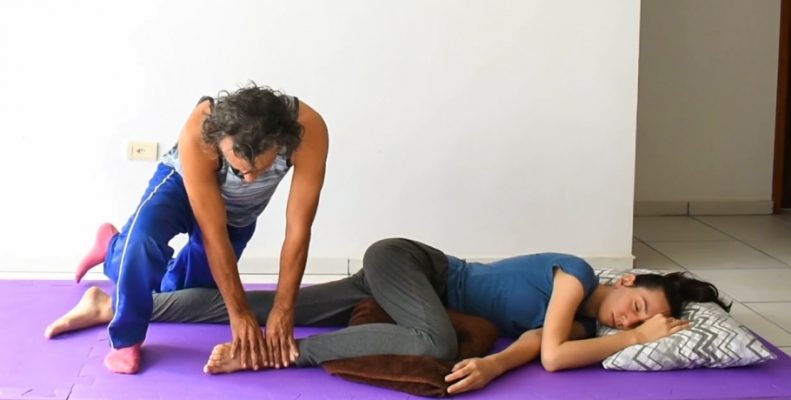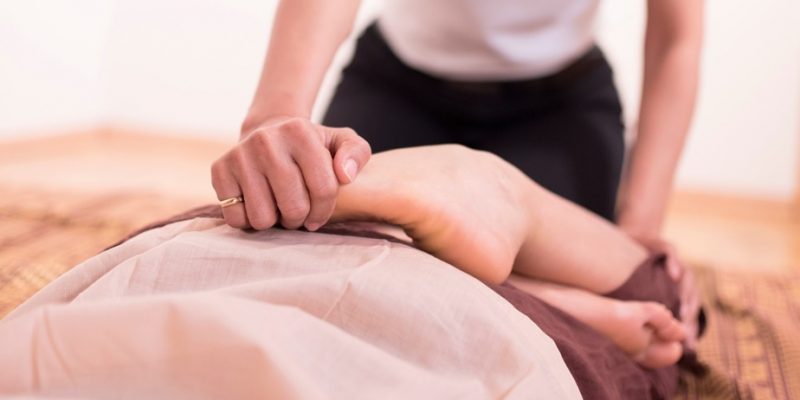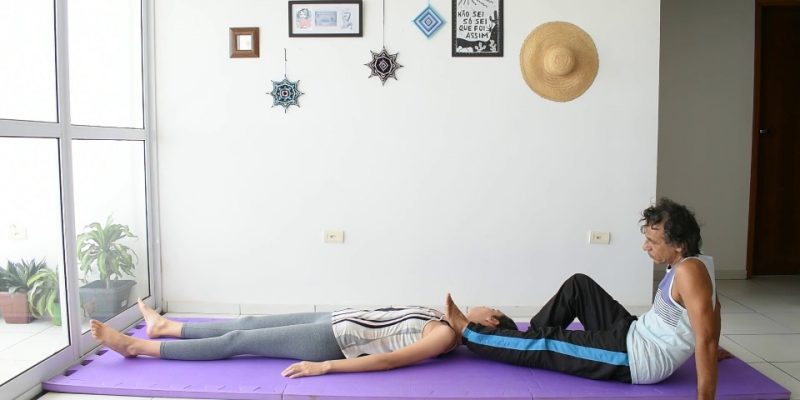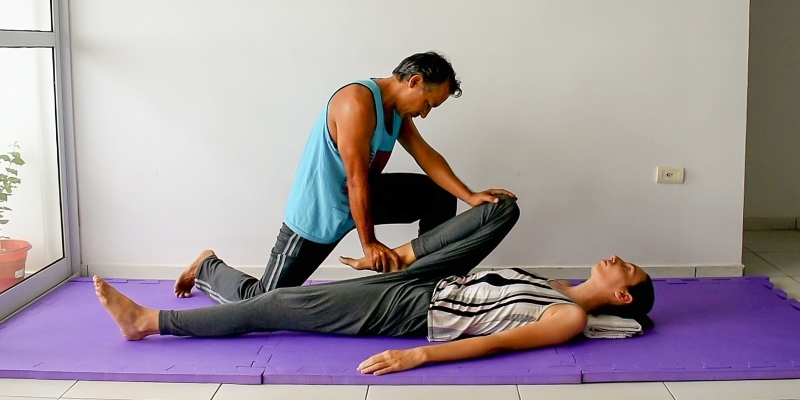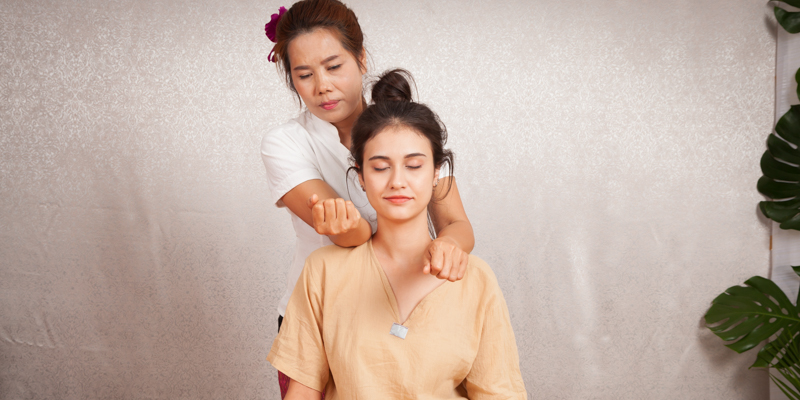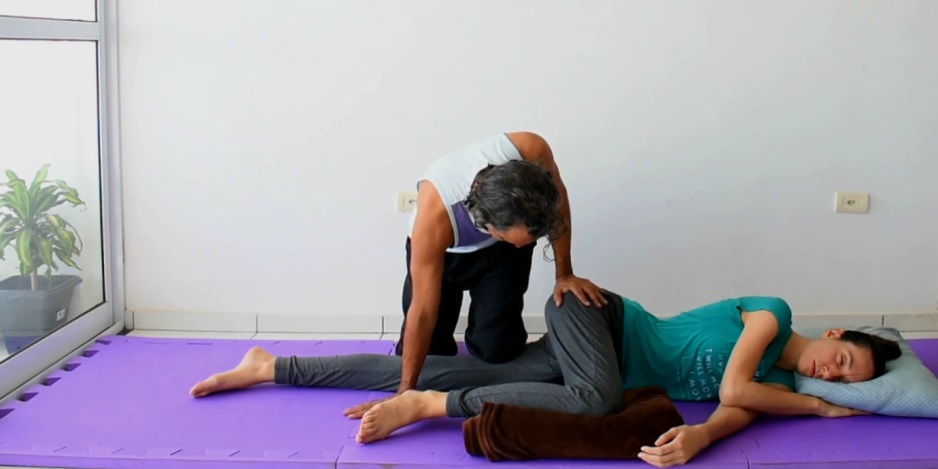
A Thai Massage therapist can utilize many body parts to give a massage, the knees being one of those. As it is, each body part used, may it be the palm of the hands, the thumb, forearm, the elbow, or the foot, has its own additional benefits when used in an appropriate situation.

Using the knees in Thai Massage to massage has the benefit that you can supply quite some more and strong pressure compared to giving pressure with, for instance, the palm of the hands. This can come particularly handy when you need to massage someone with large or tight muscles.
The knees also have a less pointy i.e. sharp feel compared to using the elbows, and in general you can give evenly spread and smooth pressure on the muscles.
Moreover, it’s an effortless way of giving massage (with very little strain for the masseur) because you would just lean on your knee or on both knees, that is, you are in fact just kneeling on the receiver’s muscles. Additionally, by using your bodyweight while leaning in or out in different angles, various amounts of pressure can be given rather precisely.
Nevertheless, a masseur should be careful not to press on the bones or internal organs of the receiver with the knees, which, because of the strong pressure, could be potentially harmful.
Typically, I would use the knees to give pressure on the hamstrings, gluteal area (buttocks), and lower back muscles while the receiver is laying on the floor on a massage mat in the prone position (lying face down) or side-lying position.
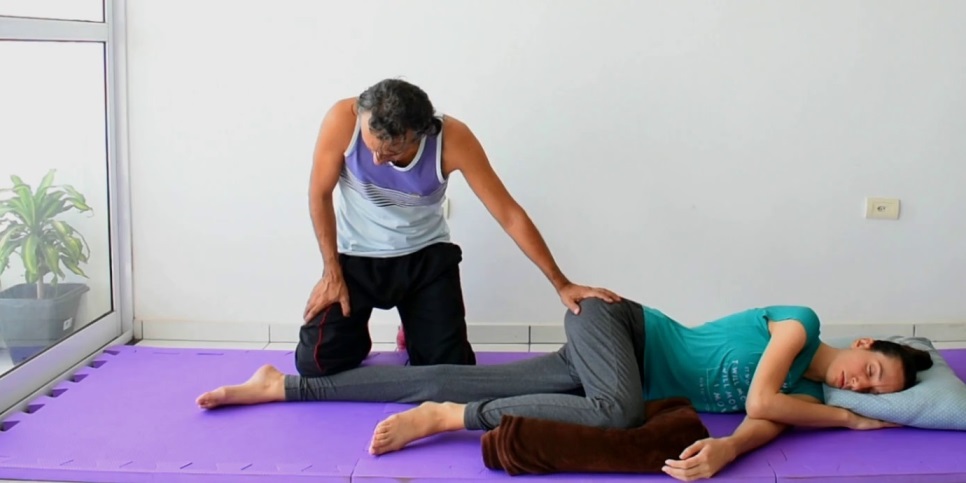
Sometimes, I would also use the knees to give pressure on the calf muscles (especially when they are large), tight abdominal muscles, or on big and tensed trapezius muscles (shoulder-back area). A special situation in which to use the knees is to give a firm and effortless Thai style blood stop on the inner part of the thighs (the groins), that is, a compression of the femoral arteries.
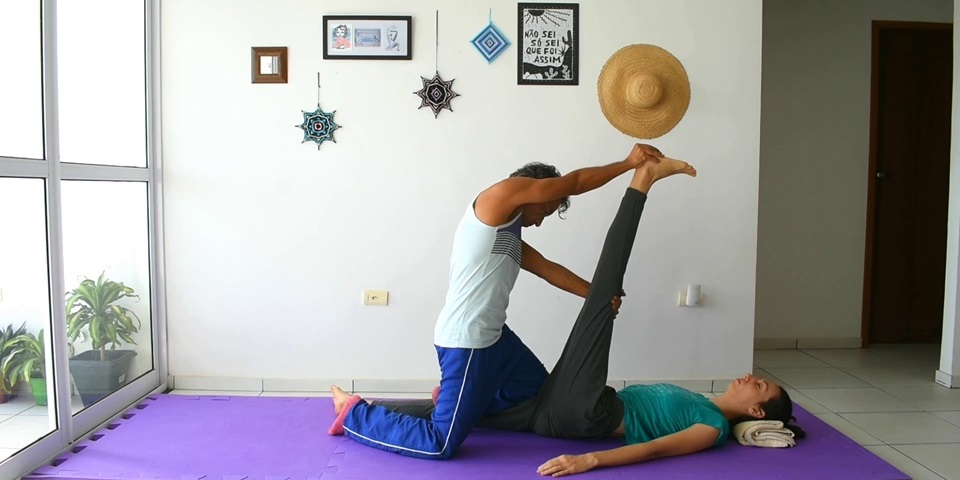
And finally, apart from giving pressure with the knees, you can also use them just as weight to block or avoid movement of certain body parts of the receiver. This would typically be while carrying out a stretching technique on the receiver, for instance a so-called Cobra stretch (chest and shoulder opener) or a hamstring stretch as shown here in the image above.



